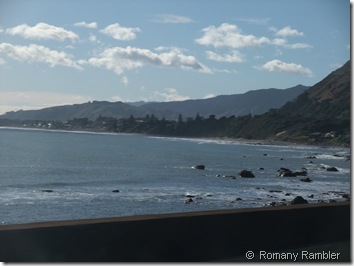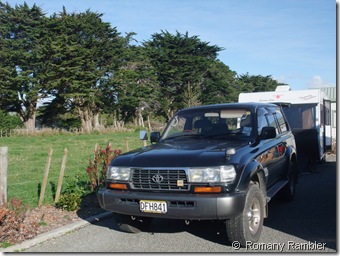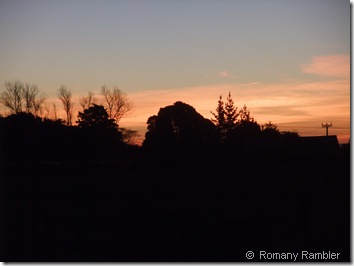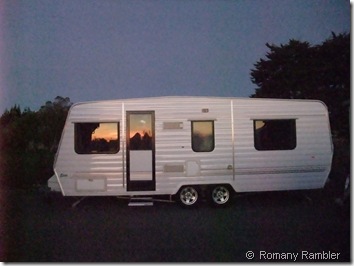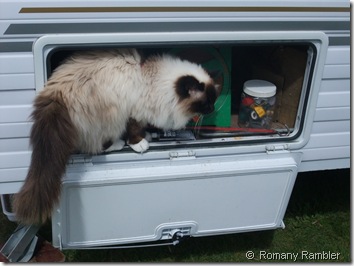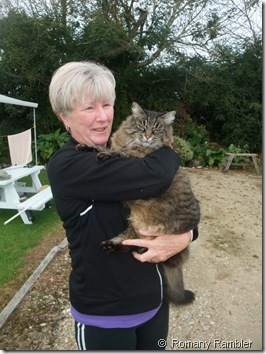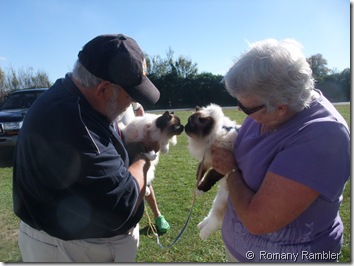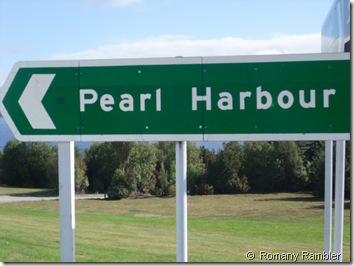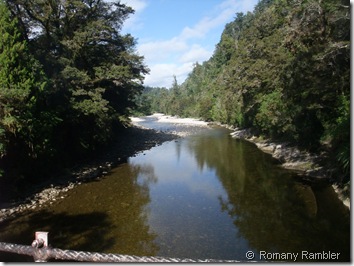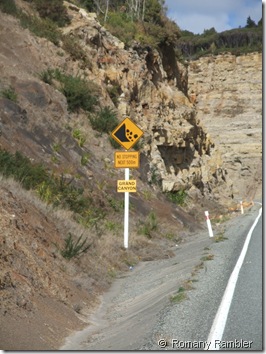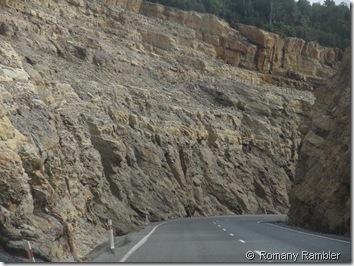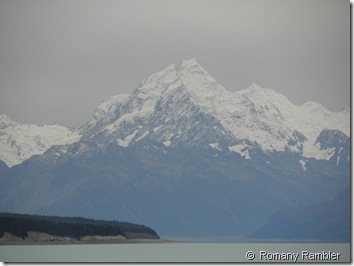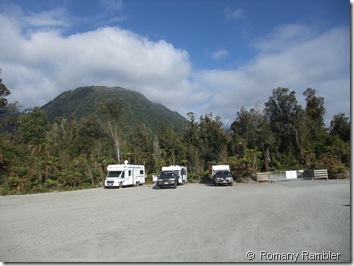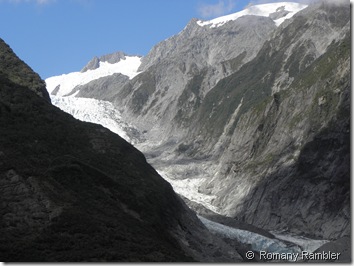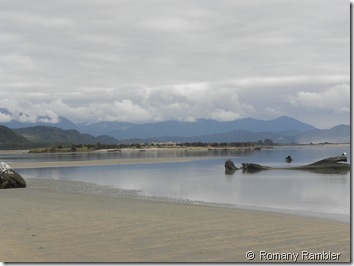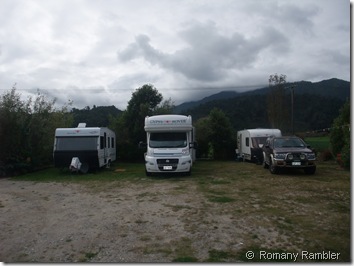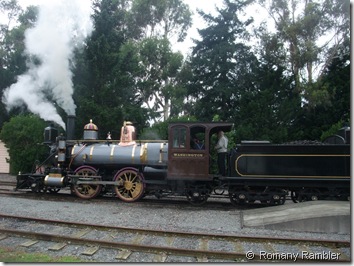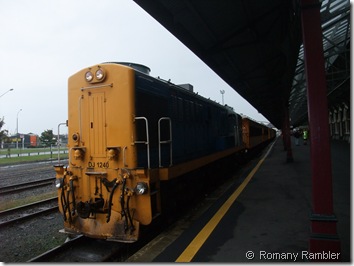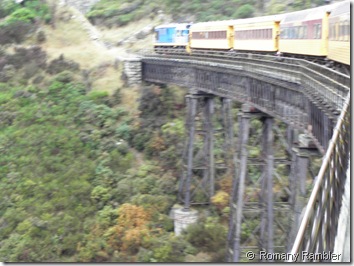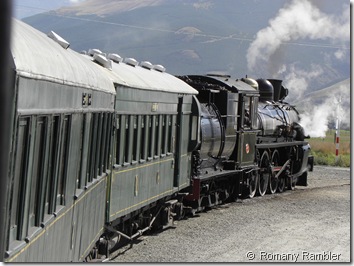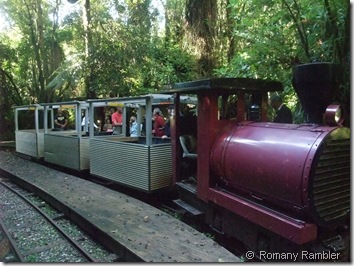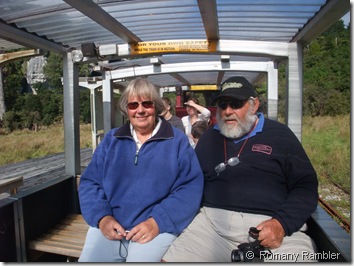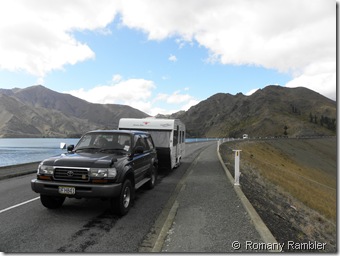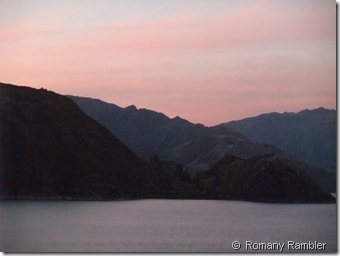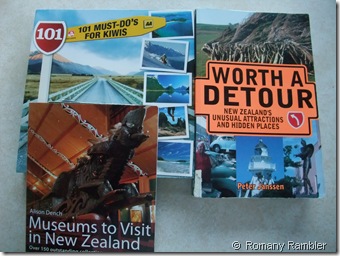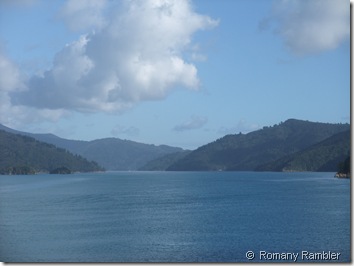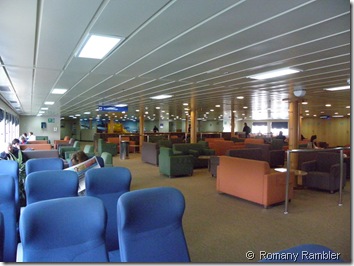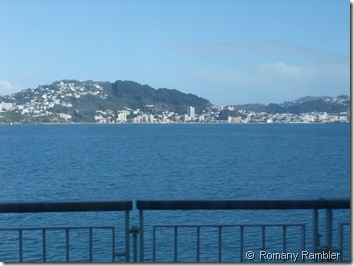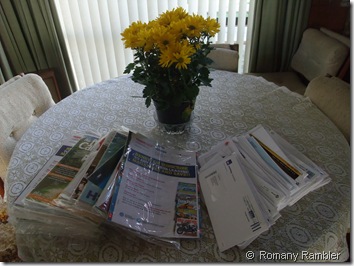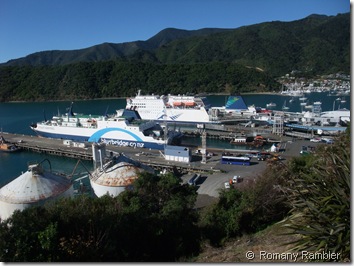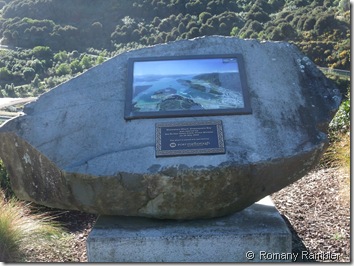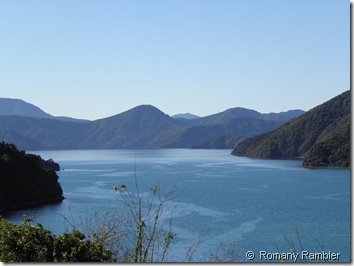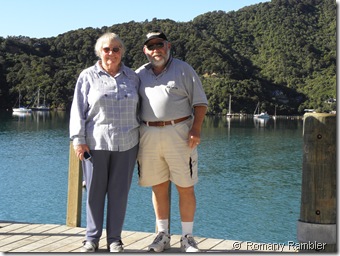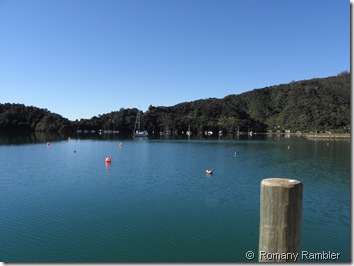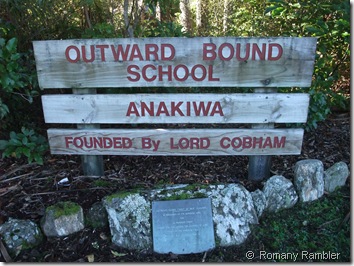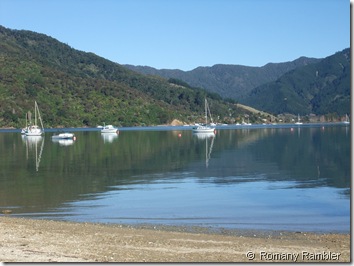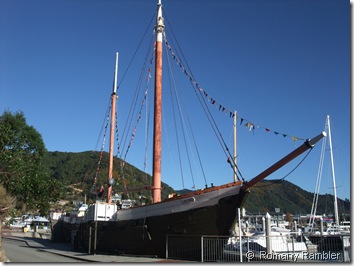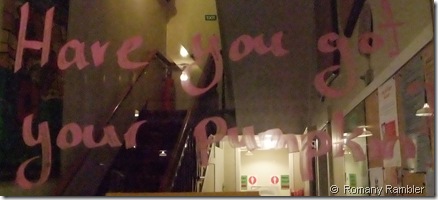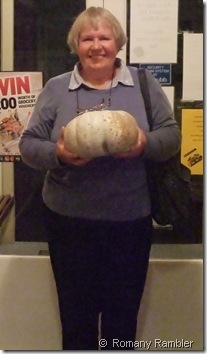Thursday 31 May 2012
Starting early for a Caravan Rally
Wednesday 30 May 2012
Travelling with cats
Monday 28 May 2012
That sounds familiar
On our South Island travels we visited places with very famous names indeed. We have all heard of Niagara Falls, those magnificent falls located on the Niagara River and forming the border between Ontario and New York State. (In fact, we have been lucky enough to visit them). The New Zealand version of Niagara Falls in the Catlins were named by a surveyor who had seen the real thing and named these falls as a joke after the originals. To be absolutely honest, our falls are tiny indeed, but it is good for a laugh, and we just had to come and see this version for ourselves.
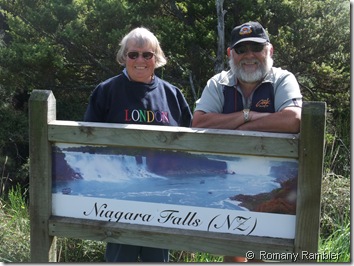 Niagara Falls New Zealand style
Niagara Falls New Zealand style
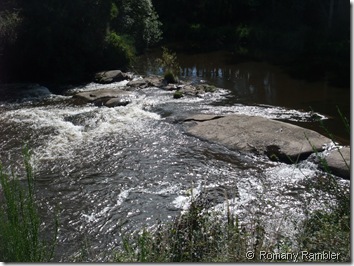 We admit that they are tiny, more a rapid really
We admit that they are tiny, more a rapid really
Pearl Harbour in Hawaii is a very special place indeed and we have been privileged to go and view the Arizona Memorial some years ago. We are not sure how Pearl Harbour in Manapouri came to be named, but we are sure that no disrespect was intended. We left here to cruise across Lake Manapouri, then take a coach trip over Wilmot Pass, then a catamaran cruise through Doubtful Sound. On our return trip our coach driver carefully manoeuvred down a 2km circular tunnel to the machine hall of the Manapouri Power Station, before returning at the end of the trip to Pearl Harbour.
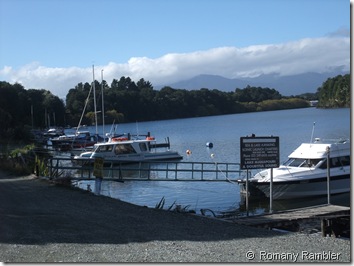 Peaceful Pearl Harbour in Manapouri
Peaceful Pearl Harbour in Manapouri
Our version of the Nile River is in Charleston, Westport. Tradition says that this river was named after an ill-fated ship which mistook the mouth of the river for Constant Bay and was wrecked. We enjoyed a trip on the Rainforest Railway which took us into the Paparoa National Park. As the train trundled into the Nile River Canyon, there was not an Egyptian or a pyramid to be seen.
Sadly we have never been to the real Grand Canyon, but yes, the Kiwis have done it again and used yet another well known name. We were surprised to come across and drive through the “Grand Canyon” on the road to Millerton, on the West Coast. The canyon was not quite up to USA standards, we have to admit, but still an interesting.stretch of road.
Niagara we knew about, but the other three names were a complete surprise when we stumbled across them. These names certainly added interest to our sightseeing trips.
Saturday 26 May 2012
The Majestic South Island
The scenery of the South Island of New Zealand can only be described in superlatives, such as majestic, stunning, and sensational. The mighty Southern Alps runs along the spine of the South island and provide a barrier for the prevailing westerly winds. As the damp air rises it cools, and drops most of its moisture as rain, which gives rise to the West Coast rain forests. The West Coast of the South Island is the wettest area of New Zealand, while the area to the east of the mountains, just over 100 km away, is the driest.
Image courtesy of Wikipedia showing South Island
So what was our favourite area down south? To be quite honest, it’s impossible to chose. With vistas of mountains, rugged peaks, glaciers, rain forests, fiords, rivers, lakes, hot mineral springs, wild coastlines, streams and estuaries, and rolling farmland, each day brought us more wonderful views to marvel over.
If you haven’t yet visited the South Island of New Zealand, put it on your “Bucket List”, you won’t be disappointed. We are already making plans for another South Island trip.
Thursday 24 May 2012
A few favourite places to stay
After staying at 50 quite different campsites in the South Island, we were reminiscing as we decided to pick a few favourites. Actually, it wasn’t too hard to do, and being of like minds, we were both in agreement too. Our New Zealand Motor Caravan Association Directory (known to members as The Bible) lists virtually hundreds to places for members to stay overnight, so we just tried a fraction of what was available during our South Island trip. So in no particular order, we present our favourites.
Park Over Properties, known as POPs, offer safe overnight parking on private land for members, and can range from a suburban home, to a smallholding. There are over 300 POPs throughout the country, and usually a minimum of services are offered, such as access to water. POPS are quite often free, but we like to offer a donation for the use the property giving us safe off road parking. Our favourite, purely for the glorious view in the middle of nowhere, was at Lochaburn, in Central Otago. Here we stayed overnight looking out over tussock covered farmland, with a horse sharing the paddock with us. We did wonder if we would ever make it up the steep and challenging dirt road, but once we finally arrived, the peaceful location in rural surroundings was well worth the effort.
 Lochaburn POP, in a rural country setting
Lochaburn POP, in a rural country setting
Low Cost Parks are also on private land and usually offer more facilities such as water, power, toilets, showers, and charge a fee to cover these costs. Our favourite was at Geraldine, a beautiful property reached by driving down a tree lined sweeping driveway. These property owners love company and have set their grounds up with power points, a laundry room, and a shower and toilet available for use in the garage. The friendly little poodle liked to check out the visitors, and I was happy to check out those happy clucking chickens in the rear of the property. Happy Hours are encouraged, and the friendly hosts told us that they are planning on extending their property to allow for even more overnight guests. This LCP wins hands down for the beautifully planted grounds, facilities, and friendliness.
NZMCA owns a number of properties for members to use and we visited most of them in the South Island. They all offer hard standing, some but not all have water available, usually they have no facilities for rubbish. The property at Franz Josef won our vote on “location, location, location”, situated as it was just a short stroll from the alpine village. It was ringed with trees, and had the extra advantage of water, a dump station, and rubbish bins. And best of all, these NZMCA properties charge a very modest charge per night – we really can’t do better than that for safe, off road parking. We stayed several nights at this delightful spot and walked up to both the Fox and Franz Josef Glaciers.
We stayed at several Domains, which are generally large grassed recreation areas owned and administered by the local City Council. Facilities vary from domain to domain, and our favourite was at Karamea. The rates were reasonable, and although the facilities were a little on the old side, we found everything we needed here for a comfortable stay, power, toilets and showers, and a laundry. And a grand-stand, if we felt like making use of it, looking over the large playing fields, but no cell phone coverage or internet in this part of the country.
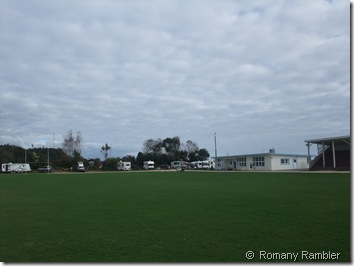 Plenty of room at Karamea Domain
Plenty of room at Karamea Domain
Some pubs offer their grounds to campers and usually have power points and facilities. Seddonville Hotel on the West Coast was our favourite. There was a nice little grassed area to park in, power points, laundry facilities, and a shower and toilet available. But what made this a stand out place, was the friendliness of the hosts, and the delicious meals available in the hotel. Nothing was too much trouble, and we enjoyed our stay here so much that we returned again a week later on the return from our trip to Karamea. The highlight of our stay would have to be attending the Anzac Day Dawn Service, and being so warmly welcomed by the locals.
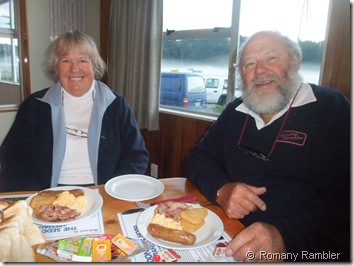 Anzac morning breakfast in the pub
Anzac morning breakfast in the pub
Motor Camps need no explanation, these commercial ventures are usually very well maintained and offer good facilities. However, we feel that some of the prices demanded these days are very expensive, and tend to be aimed at the tourists rather than the local market. From time to time when there was nothing else available we stayed in a motor camp, and our pick would be Manapouri Motorhome and Caravan Park. This near new camp was well set out with wonderful facilities, and as a bonus, very moderately priced too.
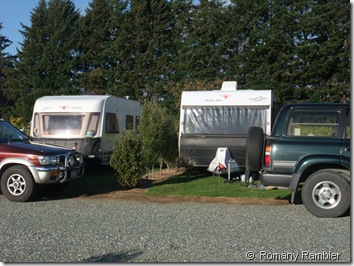 Manapouri Motorhome and Caravan Park
Manapouri Motorhome and Caravan Park
So that’s our personal picks for the trip. We stayed at such a variety of places, and sometimes when planning to stay in a particular town, there was a variety of options available and we were spoilt for choice. Wonder what our travelling companions would choose for their favourites?
Tuesday 22 May 2012
Reflections - Who doesn’t love Trains?
Sunday 20 May 2012
Vital Statistics
Brrr, it’s chilly back home. We left Picton in sunshine on Friday and now home we have the heating on, we’re dressed in warm trousers and woolly jumpers, and our feet are clad in warm socks and slippers. Did we mention we had to switch the electric blanket on to warm the bed last night?
While we were down south we had 96 nights away, and stayed at 50 different overnight locations. These ranged from motor camps, NZMCA properties, domains, pubs, park over properties, several A & P grounds and race courses, two farm properties, a chestnut orchard, a car sales yard, and a truck stop. All these overnight stays had a fee attached, which varied from $4 a night to about $35 a night. (We stayed away from the really expensive camps). Many charged extra for showers. And we very bravely tried “freedom camping” just twice. Once on the banks of the Tekapo Canal in the middle of nowhere, where it was a beautiful peaceful but rather chilly night with the stars shining bright in the sky. Our second freedom camping adventure and was as the quaintly named Monkey Island on the beach front. Here the winds were fierce but the setting was delightful, and we could just imagine how popular this spot would be in the middle of summer.
 Washing blowing in the sea breezes at Monkey Island
Washing blowing in the sea breezes at Monkey Island
Our Toyota Land Cruiser towed the caravan 3973km around the South Island, and then we drove a staggering 3413km without the caravan on the back, tiki touring around. A grand total of 7386kms for the trip, and we used 1417 litres of diesel. And all this travelling cost us $2292.17 and our fuel consumption averaged out at approx 18 litres per 100 kilometres.
An unexpected cost was replacing the two caravan house batteries, and we were told that our reasonably new batteries which were bought less than twelve months ago were not the correct type for our usage. These batteries have been carried all around the South Island and brought home (instead of being discarded) (120kg) and Robin plans to take them back to the supplier and get a refund. While new batteries were being fitted, Robin took the opportunity to replace the tail lights with LEDs. This extra expense added $1178 to our travel costs. Dot and Derek also had battery problems and while we waited a couple of extra days for the delivery truck, we had the most glorious views over Lake Hawea which also included impromptu aerial displays for Wings over Wanaka show.
Exploring towns and visiting attractions was made easy with my well used collection of books. My book “Explore New Zealand” was invaluable, is full of facts and figures en route and lists all sorts of interesting points of interest to stop and investigate.
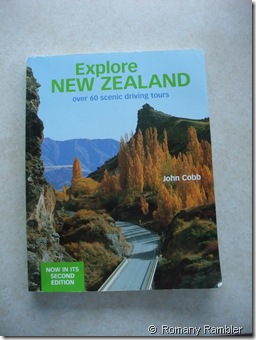 My most useful and informative book
My most useful and informative book
These other three books were handy to flick through when we planned to stop at different areas, to see what there was worth visiting. They were all well thumbed through over the duration of our trip. They were all used religiously, and worth their weight in gold. By far the most useful book was the NZMCA Travel Directory which listed every conceivable place to stay, from DOC sites to motor camps and everything in between.
So as far as travel goes, is it the journey, or the destination? Both, of course. Getting there is half the fun, but once on site, there is always interesting local views, attractions, a museum perhaps. We’ll tell you about some of our favourites next time.
Friday 18 May 2012
All Aboard the Aratere
With two car ferries operating across the Cook Strait, you would expect the prices of each to be comparable. Not so – we found the difference in costs between the two companies to be in the region of $40. It wasn’t hard to make the decision to travel with the cheaper shipping company. We arrived at the Picton port bright and early and lined up where directed amongst a whole lot of cars, motor-homes, vans and large trucks. Surprisingly, we didn’t spot another caravan at all.
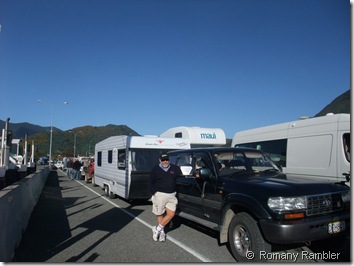 Waiting for the ferry to arrive
Waiting for the ferry to arrive
Muffy was locked in the caravan to cope with the trip by herself, as best she could. No doubt once the crossing was underway and all those strange noises had quieted down, she would be able to curl up and have a snooze in the caravan. Robin makes no bones about being a poor sailor, but with a couple of “Sea Legs” under his belt, he felt he would be OK. The first part of the trip was quite calm, as we guided slowly through the Sounds.
Things got a little more turbulent as we crossed the open waters while we were eating lunch in the cafe. My advice to myself is not to look out the windows and see the horizon moving up and down, but to concentrate on reading a book. Works for me, and after lunch we went back to our air craft style seating to relax. Robin had the morning newspaper to read, and I was rather involved in “Lady Chatterley’s Lover”, so we didn’t have to think about the moderate swell.
The crossing takes round about three hours, and before we knew it, we were approaching Wellington and glided into the harbour past the expensive properties at Oriental Bay. We were requested to gather our belongings, make our way back down to the car deck, and get ready for when the ship docked.
Off we went, joining the queue of all the other traffic as we disembarked, and quickly stopped at a parking space on the wharf. Muffy was rescued from the caravan, a little wide eyed and agitated after three hours down in that noisy hold all by herself. After a few kind words and a cuddle, she calmed down and we drove the final leg of our journey, homewards bound. It certainly didn’t seem that we had been away for three months, we commented. That’s till we saw the big pile of mail waiting for us to deal with. Our house sitter had been clearing the letter box and stacked it up neatly – that’s a whole lot of mail to open! Luckily she had already discarded the three months worth of junk mail that came with it.
